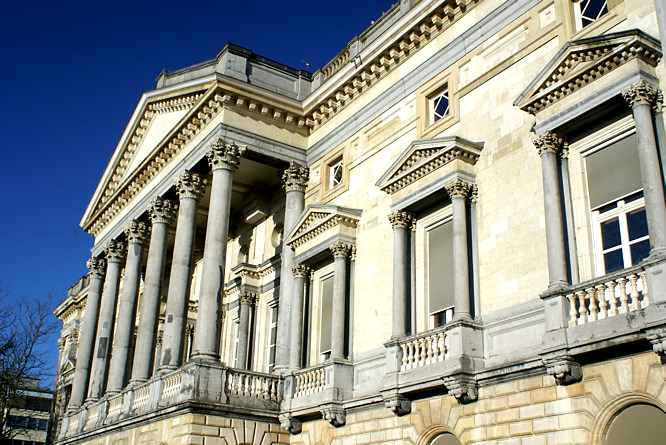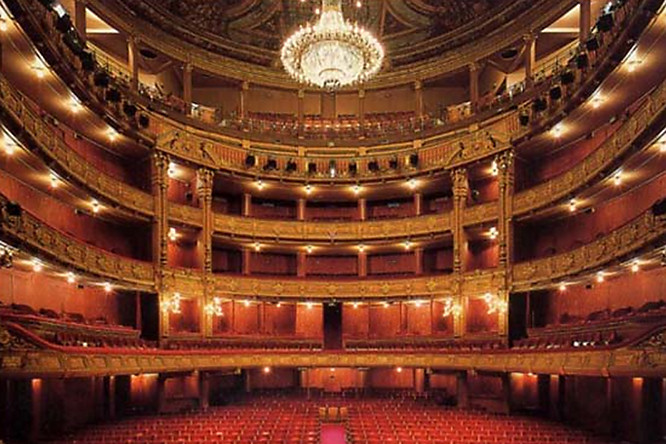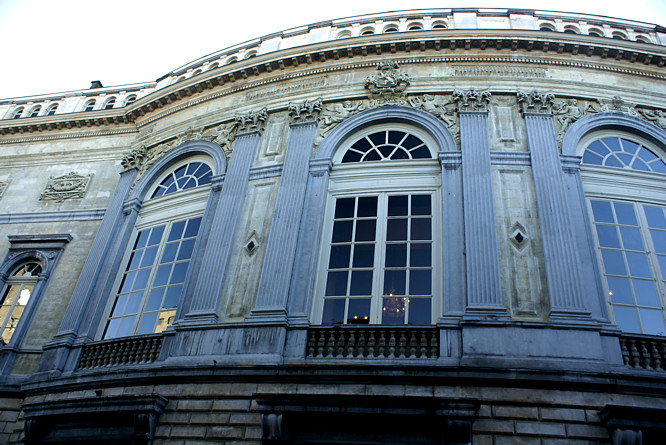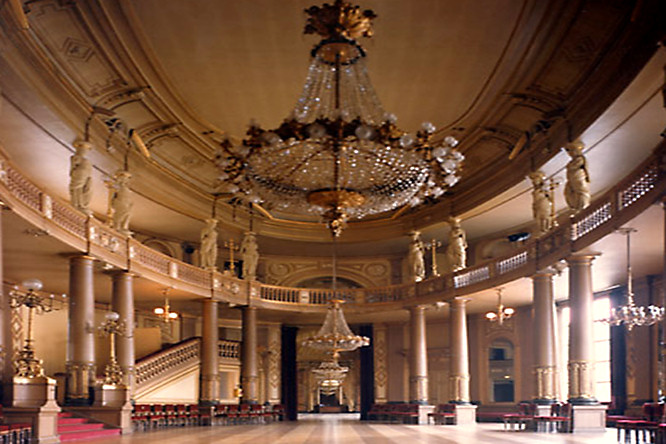Ghent's Law Courts - Justitiepaleis - Gent Palace de Justice
In 1836 work started on building the Ghent law Courts, the Justitiepaleis or Gent Palace de Justice. They were finished ten years later in 1846.

Belgium architect Louis Roelandt was appointed architect to the city of Ghent in 1818 and commissioned to design and oversee the law court building project. A prime location was found on the riverbank.
This was the time of the Grand European Tour. All young men of good breading travelled to places like Italy and Greece to further their education. They brought back sketches of the buildings that belonged to the once powerful Greek and Roman empires.
They incorporated the classical design features into a new architectural style called neo-classic. The Ghent law Courts are a great example of a grand neo classical building. The pediments display a large frieze with the figure of justice in the middle, the accused to one side and the condemned on the other.
The number one tram that goes to and from the Gent-Sint-Pieters railway station stops opposite the law courts. If you have just arrived in Ghent you can get off here. It is a good place to start your exploration of the city by walking along the river bank towards the 'Graslei' port.

Ghent Vlaamse Opera House
On the other side of the road from the Gent Palace de Justice stands the recently restored opera house home to the Vlaamse opera. The building's facade is awash with carved stone panels. Flanders Opera organises guided tours of the opera house once a month on a Saturday. These tours are open to everyone and are an ideal introduction to Flanders Opera and all the activities behind the scenes. The tour starts at 12 noon and takes about an hour and a half. Reservations are obligatory
The impetus for the building of a new plush Ghent playhouse was given by local rich industrialists in the first half of the 19th century. They wanted a magnificent theatre to advertise their newly acquired wealth. The municipal architect, Louis Roelandt, designed an exceptional ensemble of high quality, across the street from the court of justice he had designed only a few years earlier.
The opera house has an unusual L shape with elongated halls and rooms, a departure from the traditional squares and circles established by Classicism. Ornament prevails over function here. Roelandt hired two renowned Paris decorateurs, Humanite-Rene Philastre and Charles-Antoine Cambon, to design the interiors. The result is a luxurious and harmonious ensemble of architecture, painting and sculpture.

When the double doors separating the three halls (the foyer, the Redoute Hall and the concert hall) are opened, visitors can admire the breathtaking spatial effect of an enfilade stretching for 90 metres, emphasised by the brilliance of the splendid chandeliers reflected in the many mirrors lining the walls.
The foyer has the most austere and stately atmosphere of the three halls, and it is also the only hall that is spatially and visually connected with the actual theatre. The interior is a successful combination of neo-Classicist architecture and Renaissance-inspired decoration. The original fresh and lively green colour scheme was later exchanged for a much more sober brown, but there are plans to reinstate the foyer to its former glory in the next round of restorations.
This ballroom was named after the Societe des Redoutes that used to rent it for its festivities and balls. The mood of the oval room is elegant and festive, especially when it is bathed in the light that pours in liberally through the large central bay window. The Redoute Hall has two storeys. Here too, the originally colour palette was bright and cheerful. The ceiling used to feature a painting of a balustrade and clouds in a sky, creating the impression that the hall stretched out into space.

The Lully Hall is the grand finale of the suite of salons. Its architectural structure is completely subservient to the fabulous wealth of the ornaments devised by Philastre and Cambon. Nothing in this rectangular hall is symmetrical or at rest. The lavish and colourful decorations include shells bearing musical putti, lush greenery, birds, nudes and dogs. The showpiece is the majestic chandelier (sac-a-perles) that lights up the hall with a fairytale splendour at night.
The large theatre originally seated 1800 to 2000. Its horseshoe shape was perfect for an audience for whom seeing was as important as being seen. In the recent restorations, the number of seats was reduced to 965, mainly to provide better visibility from all seats. The decoration of the theatre is rich and exuberant. The crowning glory, again, is an impressive chandelier (with a diameter of 3 m, 4.5 m high, with 84 lamps), and the ceiling with trompe l'oeil effects, painted by Philastre and Cambon.
Travel books

